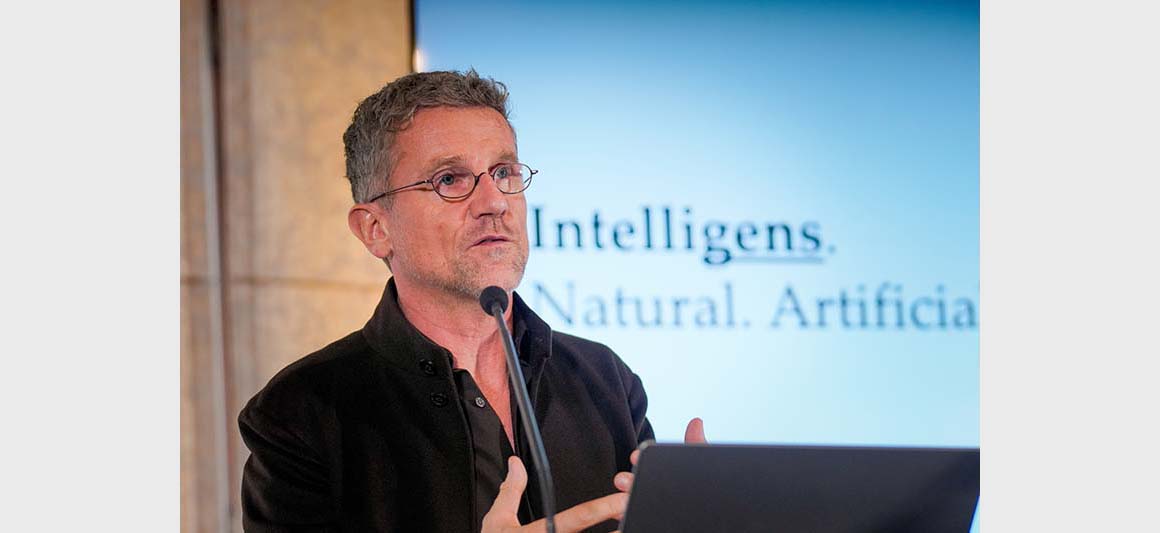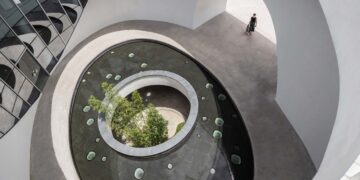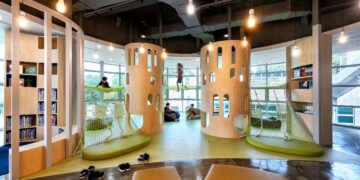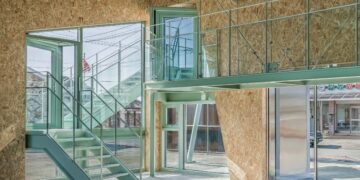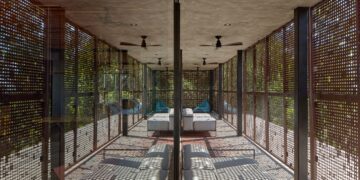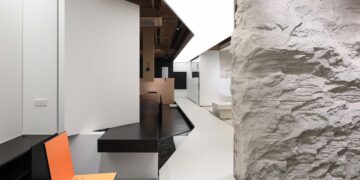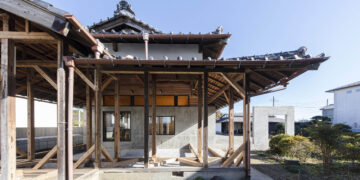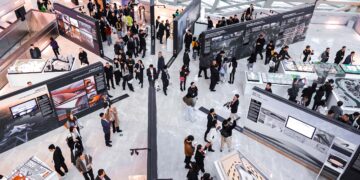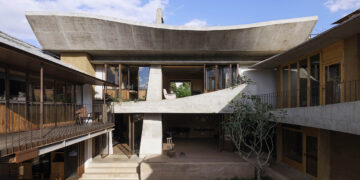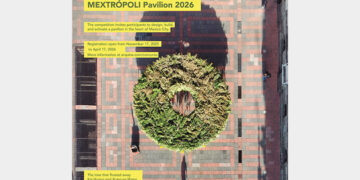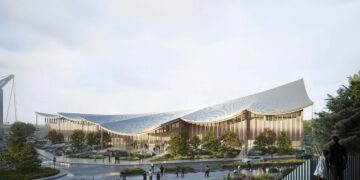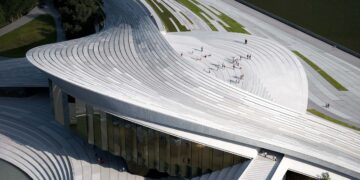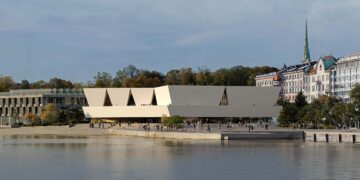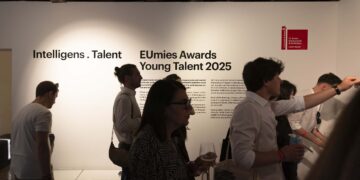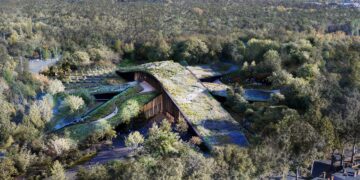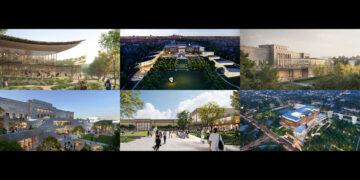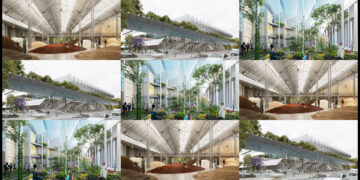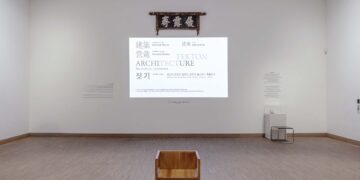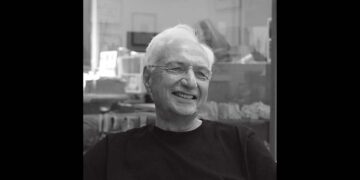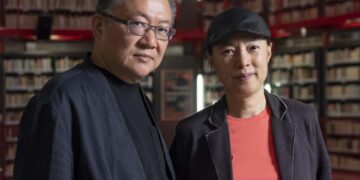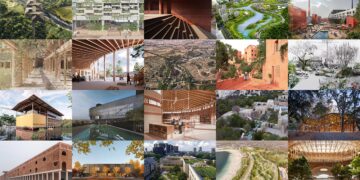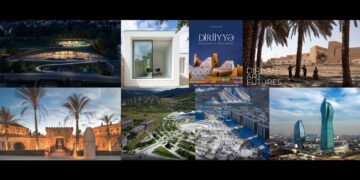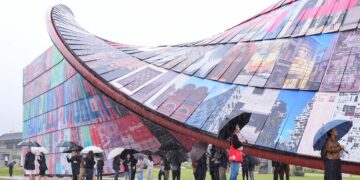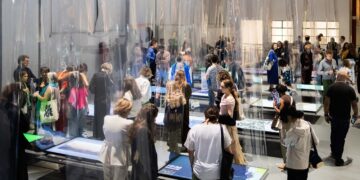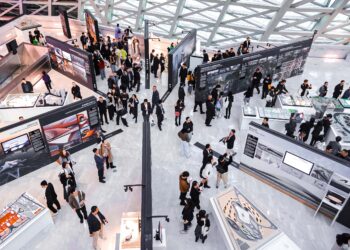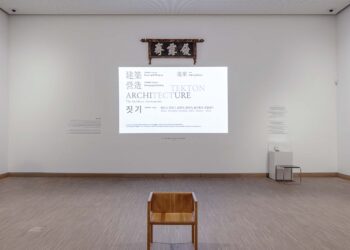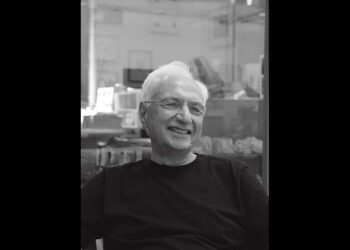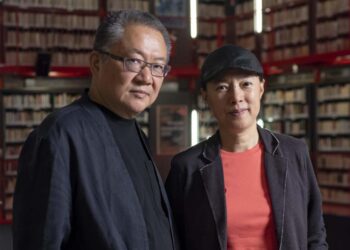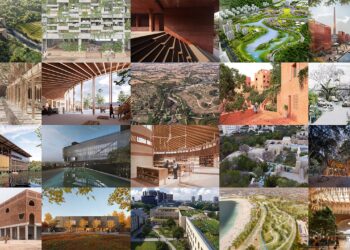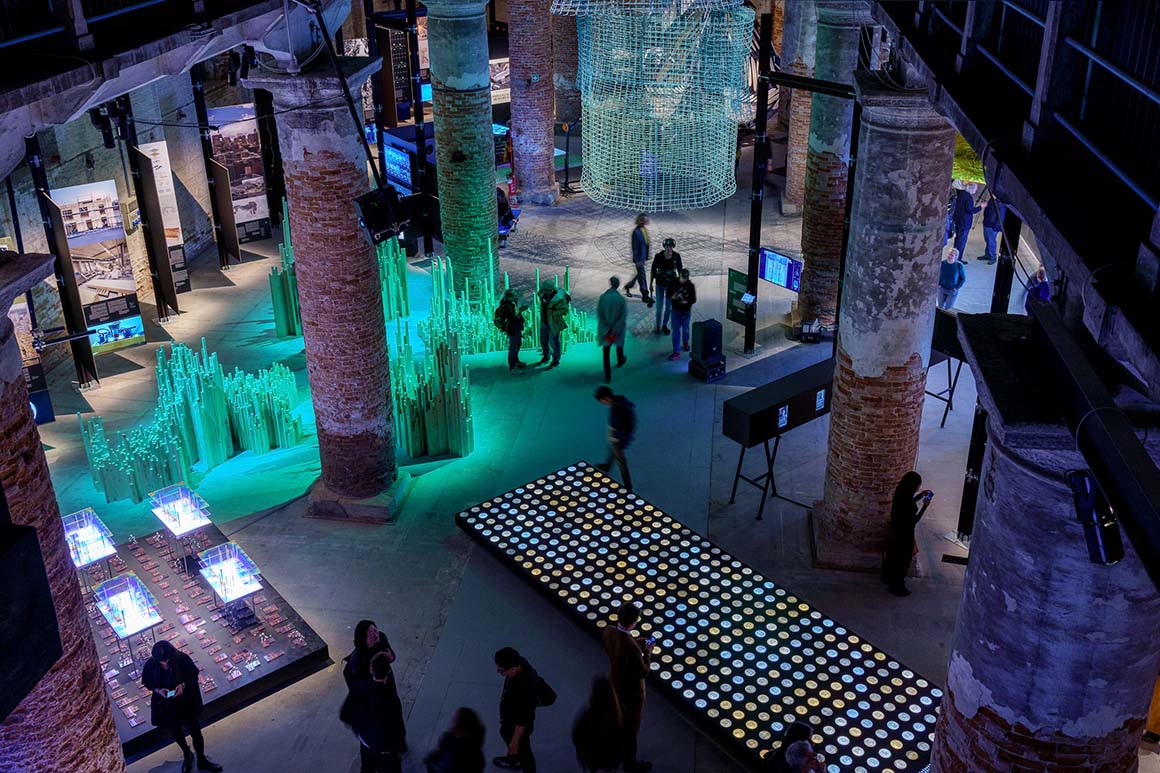
The 19th International Architecture Exhibition of the Venice Biennale opened on May 10, 2025, embarking on a six-month journey that places architecture at the center of global discourse. Curated by Italian architect Carlo Ratti, this edition transforms Venice into an expansive intellectual laboratory exploring how architecture and allied disciplines can confront the escalating climate crisis, environmental degradation, and societal complexity.
Titled “Intelligens. Natural. Artificial. Collective,” the exhibition begins with the premise that intelligence—defined as the capacity to adapt within the constraints of limited resources, knowledge, and agency—can take diverse forms. Drawing on the Latin root gens (meaning “people”), the title signals a shift from singular to plural modes of intelligence. It suggests a future where human ingenuity must move beyond artificial systems, embracing creativity, multiplicity, and collaboration.

In an era marked by compounding uncertainty, the traditional model of “mitigation” is no longer sufficient. Ratti proposes “adaptation” as the defining paradigm of our time—an approach that synthesizes natural ecosystems, artificial technologies, and collective human wisdom. Architecture, he argues, must become more fluid and interdisciplinary, capable of bridging divides across generations, geographies, and fields of knowledge.
Conceived as a “giant laboratory,” the central exhibition features more than 750 participants and over 300 projects. It brings together architects and engineers, mathematicians and climate scientists, philosophers and artists, chefs, programmers, woodworkers, writers, farmers, and fashion designers. This radical cross-section of contributors reflects a bold reimagining of the architect’s role—not simply as a builder, but as a “mutagen,” a catalyst for transformation and evolution.
This year’s Biennale includes 66 national pavilions, with 26 located in the Giardini, 22 in the Arsenale, and 18 spread throughout Venice. Due to renovation work at the Giardini Central Pavilion, the curated main exhibition is hosted exclusively in the Arsenale and across the city.
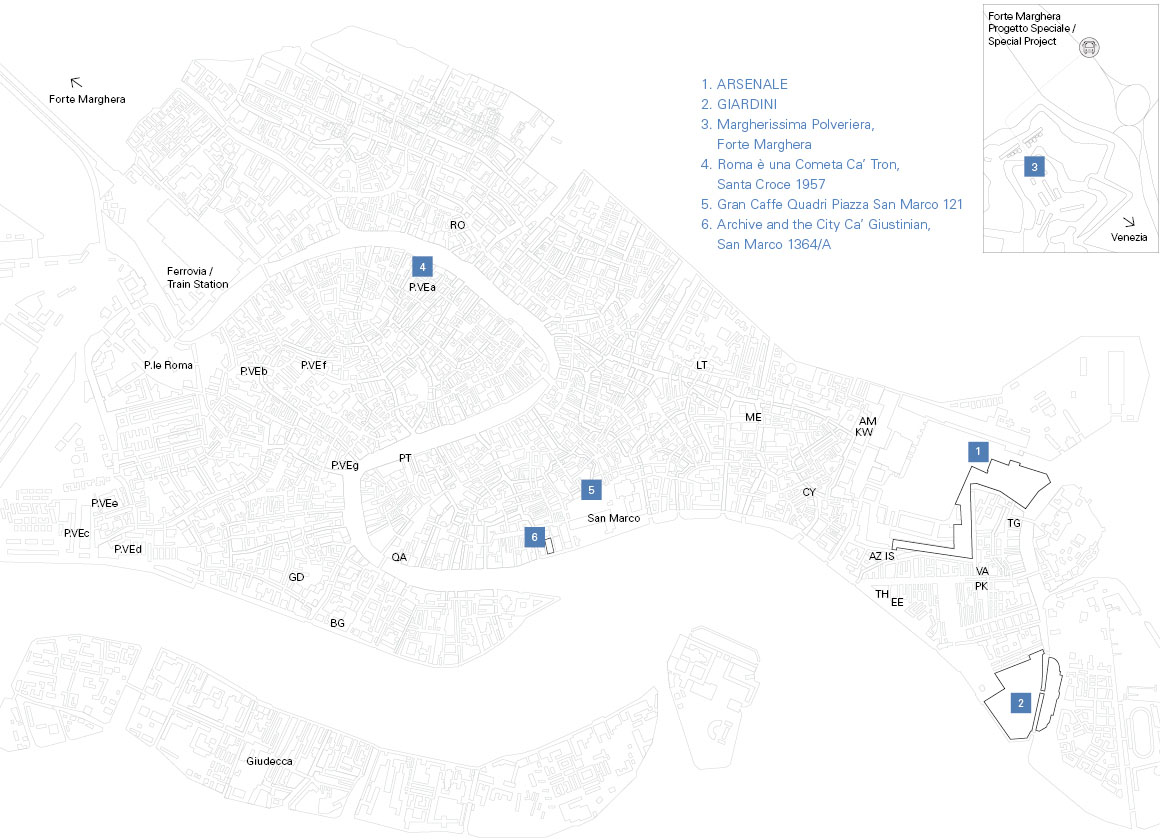
To guide visitors through this vast and multi-layered presentation, Ratti outlines ten thematic pathways. These conceptual routes challenge the conventional hierarchies of architectural authorship and underscore the Biennale’s commitment to multidisciplinary inquiry, civic engagement, and ecological imagination. The themes are:
1. Tree Tech Architectures Learning from Nature
2. Alliances for the Chthulucene Building Beyond Humans
3. Radical Shelters Architectures of Hope in a Harsh Environment
4. Architecture Beyond Architects Networks for Participatory Design
5. Robotic Constructs New Human-Machine Alliances
6. Networked Cities AI, New Energy & Digital Tech
7. Staying Cool Negotiations of Sun and Shade
8. Circular Matters High & Low Tech Materials for Repair & Reuse
9. Taking on Water Designing for Too Much & Too Little
10. Out of this World Design in Speculative Spaces
Each national pavilion proposes architectural strategies rooted in its local context but relevant on a global scale, aligned with the Biennale’s theme: “One Place, One Solution.” Together, they form a mosaic of adaptive responses to an increasingly unstable world.
The Golden Lion for Best National Participation was awarded to Bahrain for Heatwave, a pavilion that proposed a passive cooling system as a pragmatic response to extreme heat in arid regions. In the Thematic Pavilion category, the Golden Lion went to Diller Scofidio + Renfro for Canal Café, a public installation that purifies Venice’s canals to brew coffee—an elegant convergence of sustainability, urban infrastructure, and social space.
The Silver Lion for Promising Young Participant was awarded to media theorist Kate Crawford and artist Vladan Joler for Calculating Empires: A Genealogy of Technology and Power Since 1500, a monumental data visualization tracing the intertwined histories of computation, colonialism, and control.
Special Mentions included Tosin Osinowo’s Alternative Urbanism, which spotlighted Lagos’s self-organized markets as resilient models of circular economy, and Boonserm Premthada’s Elephant Chapel, constructed from compressed elephant dung—an audacious experiment in biomaterial design.
Among the national pavilions, honorable mentions were awarded to the Vatican’s Opera Aperta, which transformed a shuttered church into a community space for healing and exchange; the UK’s Geology of Britannic Repair, which envisioned a post-extraction architectural language; and Kenya’s pavilion, which addressed historical wounds and offered a vision of solidarity in the post-colonial context.
The Golden Lion for Lifetime Achievement was awarded jointly to Donna Haraway, the American philosopher and feminist thinker known for her writings on posthumanism, and the late Italo Rota, the visionary Italian architect and designer who passed away in 2024.
The jury comprised internationally renowned figures in the fields of art and architecture: Hans Ulrich Obrist, Artistic Director of the Serpentine Galleries; Paola Antonelli, Senior Curator of Architecture and Design at MoMA; and Mpho Matsipa, architect, curator, and scholar of African urbanism. The awards ceremony took place on May 10 at Ca’ Giustinian, the official headquarters of La Biennale di Venezia.
Golden Lion for the Best Participant in the International Exhibition
Canal Café / Diller Scofidio + Renfro

Silver Lion for a Promising Young Participant in the International Exhibition
Calculating Empires: A Genealogy of Technology and Power Since 1500 / Kate Crawford, Vladan Joler

Special Mention for Participation in the International Exhibition
Alternative Urbanism / Tosin Oshinowo

Special Mention for Participation in the International Exhibition
Alternative Urbanism / Boonserm Premthada

Golden Lion for Best National Participation
Heatwave / Kingdom of Bahrain

Special Mention for National Participation
Opera Aperta / Vatican

Special Mention for National Participation
Geology of Britannic Repair / UK

Curator Carlo Ratti brings an interdisciplinary vision to the Biennale. Educated as both an architect and engineer, he holds degrees from the Polytechnic University of Turin and the École des Ponts ParisTech, and a PhD from the University of Cambridge. He is the Director of the Senseable City Lab at MIT, where he explores the intersection of urbanism and digital technologies, and also leads his architectural practice, Carlo Ratti Associati. His curatorial experience spans the Milan Expo 2015, the BMW Guggenheim Lab in Berlin, the Shenzhen-Hong Kong Biennale in 2019, and the Porto Design Biennale in 2021. Most recently, he designed Theatre of Nature, which will represent France at Expo 2025 in Osaka.
